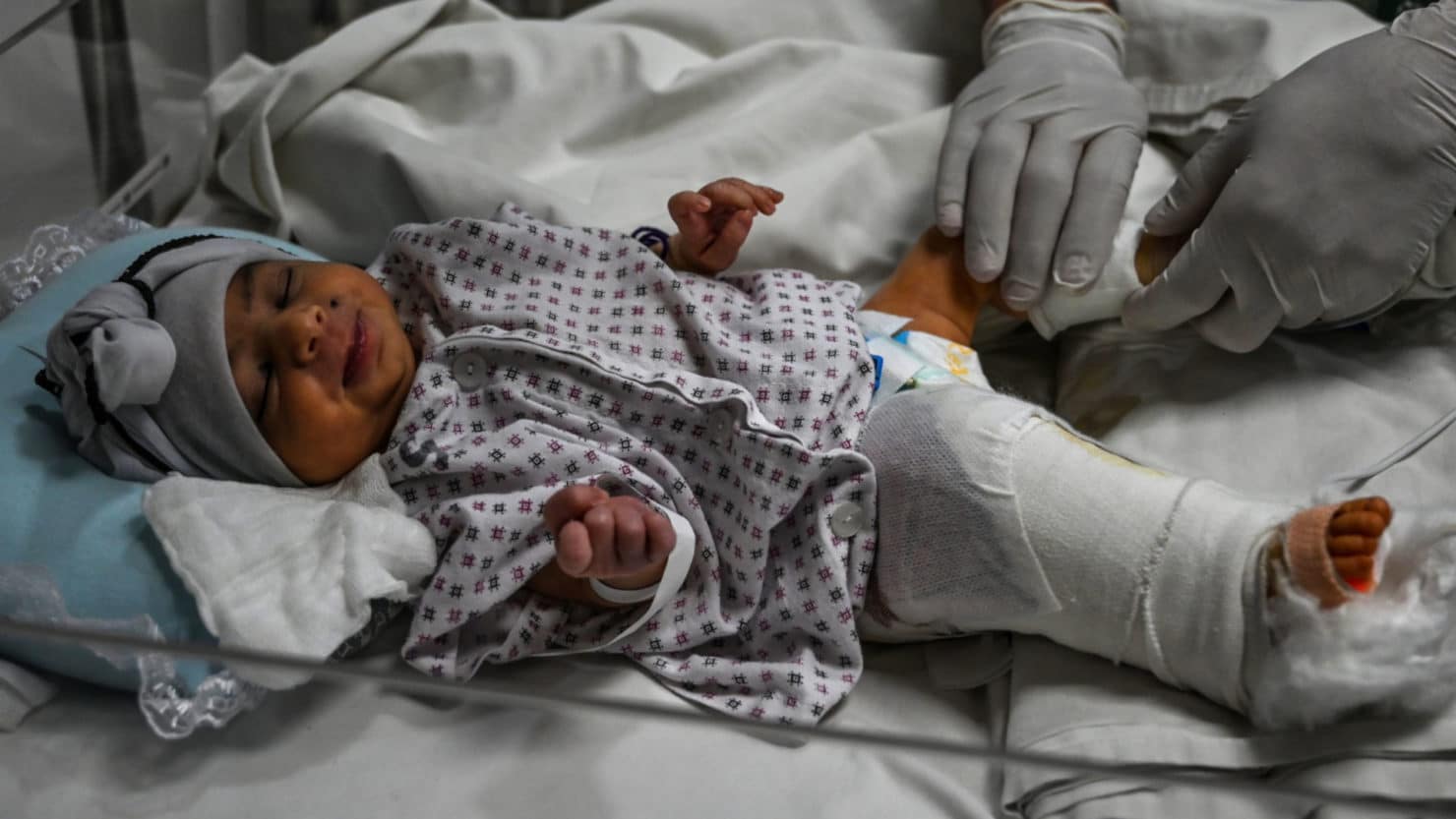RAFIULLAH SHARIFI was sitting outside the Dasht-e-Barchi Hospital in Kabul, Afghanistan, on the morning of May 12, when three gunmen stormed the building. The 26-year-old was in his car, just outside the hospital gates, when the first explosion took place. He ducked down to avoid being hit with bullets and shrapnel, and called his wife, Nazia, 24, who had given birth in that hospital just a couple of hours earlier. Sharifi asked his spouse to hide herself and their baby. He stayed on the phone until it disconnected and then waited for hours while the attack took place and security forces evacuated the babies.
Only then was Sharifi allowed inside. Twenty-five people had been killed, including children, mothers, and hospital staff. The interior was still marked with blood and the bodies of the victims. “I found my wife’s body under her bed,” Sharifi told Undark. When they found her body, Nazia’s arms were folded in a way that it seemed like she was holding her baby when she died. The baby, however, had been rescued and evacuated.
The baby had been shot in the leg several times, and so she was rushed to a different hospital, the French Medical Institute for Mothers and Children. Like many of the 20-plus babies rescued that day, the girl hadn’t even been named yet. Her only identification was a small piece of pink tape on her wrist that read “Rafiullah and Nazia’s baby.” She had three huge gunshot wounds, said Najeebullah Bina, the pediatric surgeon now overseeing the child’s care. Her leg was cold and wasn’t getting enough blood. Parts of her muscle and skin had been destroyed. An X-ray revealed that the girl’s leg bones suffered multiple fractures.
To date, no group has claimed responsibility, but the attack on a maternity ward punctuates a new chapter in the ongoing conflict in Afghanistan, with insurgent groups like the Taliban and ISIS targeting Afghan civilians — particularly women and children — with increasing frequency. Over 3,000 child casualties were documented in 2019, according to figures from the United Nations, and more than 400 children were killed or injured in the first months of 2020. This means that pediatric surgeons now face a perverse challenge: determining the best way to treat toddlers and newborns for war wounds.
“In other countries, people are not shooting on eight- or 11-hour-old babies,” explained Bina. With a lack of specific medical literature to fall back on, he and his colleagues face a host of unknowns when performing complex surgeries on infants.
After examining Sharifi’s daughter, the medical team discussed their relevant clinical experiences, working collectively to piece together a plan that they believed would give her the best chance at surviving the unprecedented attack. The first step was to prevent the girl’s condition from deteriorating. The medical team cleaned the baby’s leg wounds and then applied topical ointments and bandages. When the girl appeared stable the next morning, the team decided she was ready for a more intense surgical procedure. “We worked nearly four hours on the baby’s leg,” said Bina, “and I am pleased to say we had immediate excellent results.”
Like many of the 20-plus babies rescued that day, the girl hadn’t even been named yet.
Children with such severe war injuries face a difficult future, though. Sharifi’s daughter will need regular checkups to ensure that her wounds heal properly and she may need additional surgeries. For now, her team is encouraged by small signs of progress: The baby has gained nearly half a pound since the surgery, and her arteries and veins have healed. “There are little injuries on the sciatic nerves, but she is a baby,” said Bina. “And babies are miracles.”
Still, operating on tiny bodies poses unique challenges. “Surgery on infants up to two years of age requires delicate, fine, and minute attention to details,” said Hamid Stanikzai, a pediatric surgeon from Kabul. As a physician resident in 2015, Stanikzai was working in the emergency room of Indira Gandhi Children’s Hospital in Kabul one night when a truck bomb detonated in the middle of a residential neighborhood.
“We received lots of children that night,” he recalled. One child had been hit in the stomach with shrapnel. Stanikzai performed a laparotomy, creating a large incision in the abdomen for diagnosis and operation. An otherwise common procedure, a laparotomy can be risky when conducted on a baby or young child. According to a trauma manual created by the Royal Children’s Hospital in Melbourne, surgeons must avoid injuring abdominal organs and ribs, which are thin and more pliable than adults’, thus providing less protection.
Read full story on Undark
